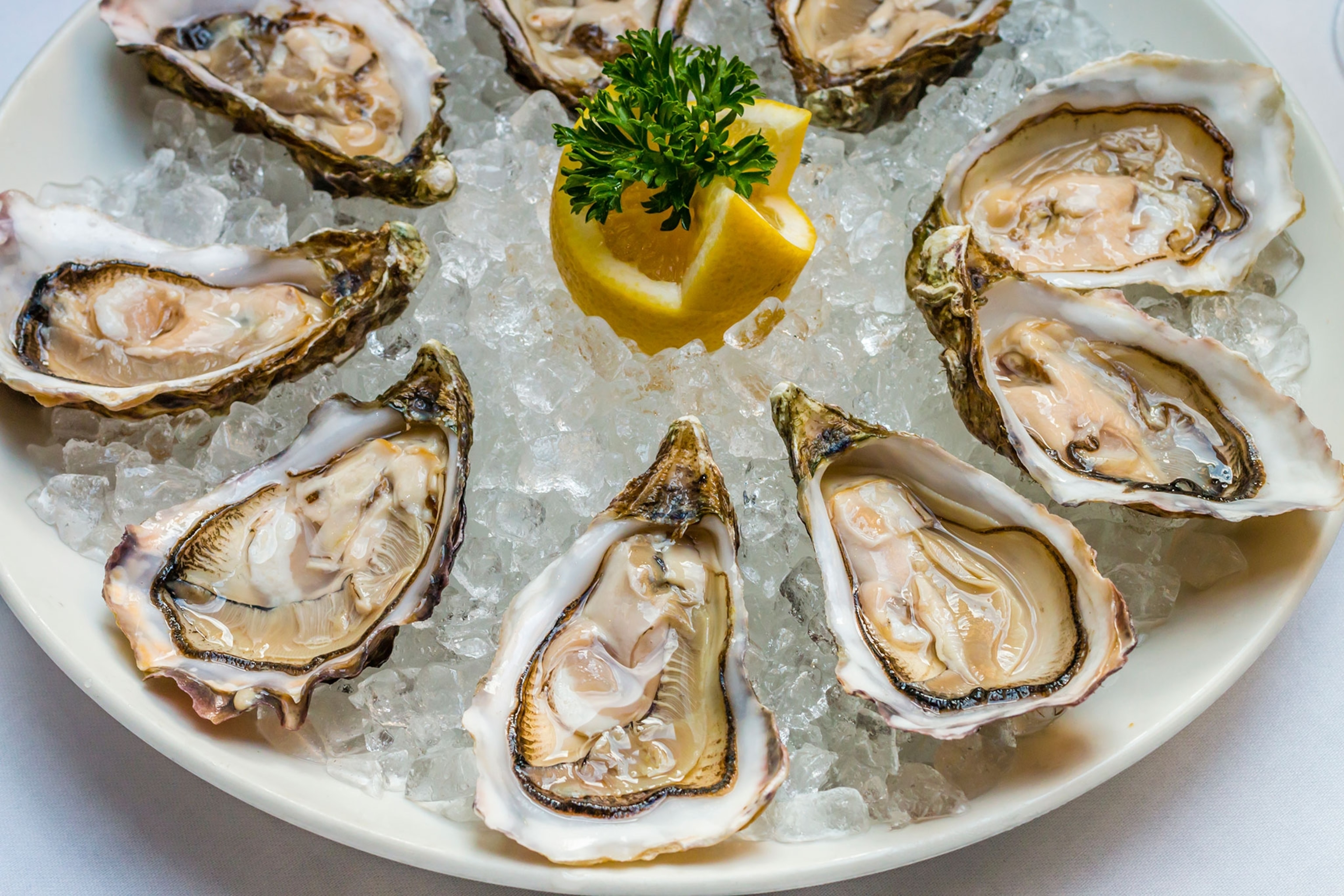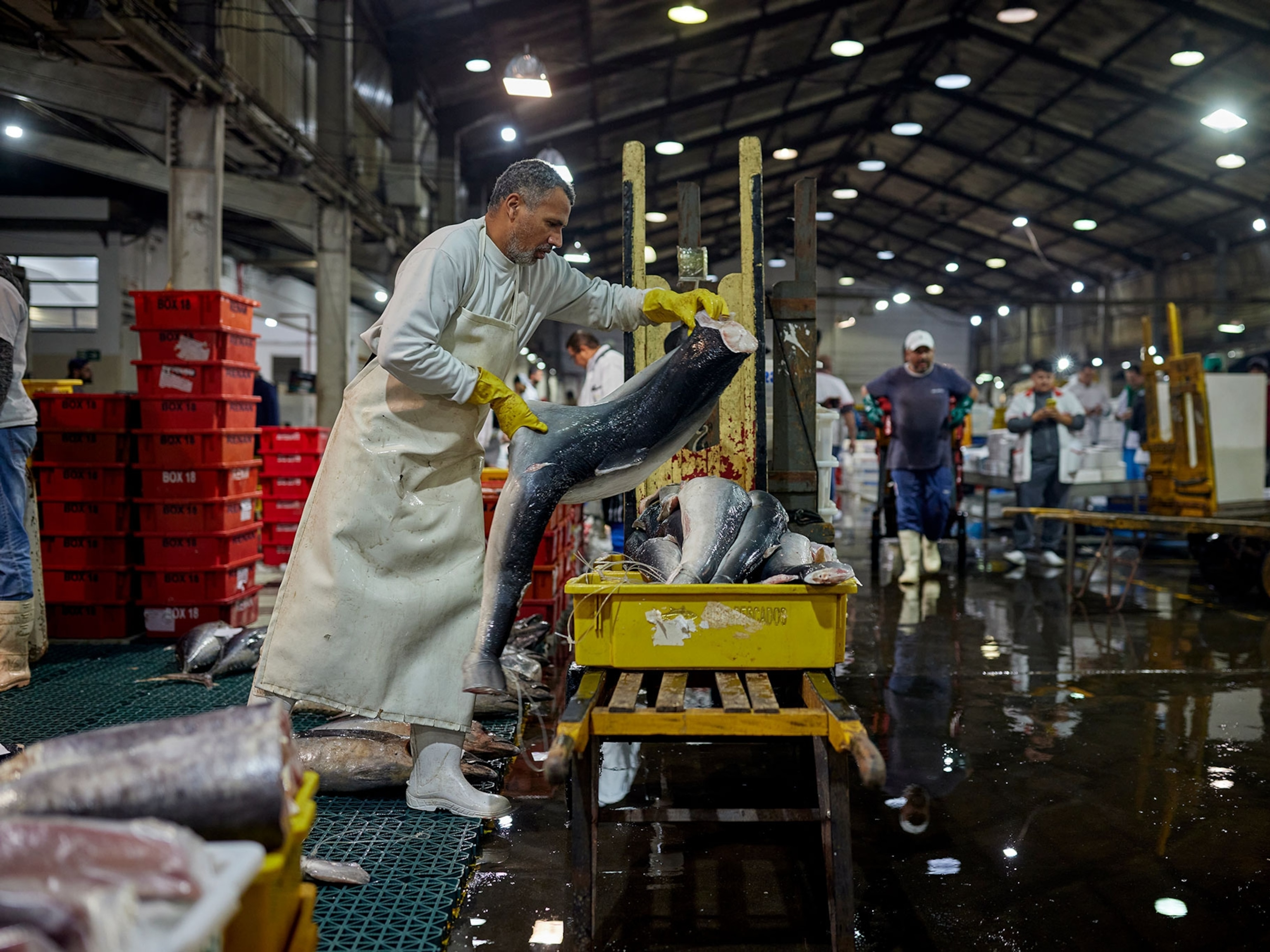
Climate Change May Make Shellfish (and Us) Sick
A 50-year study says more Vibrio infections correlate with rising water temperatures, representing “a direct impact on human health.”
Warming ocean waters as a result of changing climate have been driving ocean-dwelling species north, changing the habitat for fish and shellfish and decimating iconic species such as New England’s cod.
But new research published in the Proceedings of the National Academy of Sciences shows that the warming waters may hold an additional danger: Changed temperatures are leading to increases in a bacteria called Vibrio, which can cause fatal illness in people who eat shellfish or swim in ocean waters.
Vibrio is probably little known to most Americans, though it has caused major outbreaks in European coastal cities. But the bacteria is what lies behind the old advice to only eat oysters in months with an r in the name—that is, not in summer. Vibrio burgeons in warmer water. It collects in shellfish such as oysters when they filter water while feeding and then makes people ill when they eat the shellfish raw. It can also cause grave infections if it gets into a wound or a nick in the skin.
Vibrio can be a very serious disease: In 2014, according to the Centers for Disease Control and Prevention, 27 percent of Americans known to have been infected with Vibrio had to be hospitalized, and 4 percent died.
And that’s probably an underestimate, because cases may not be recognized or properly analyzed. “We think Vibrio is underreported and underdiagnosed,” Karen Wong, a physician who works on foodborne outbreaks at the CDC, tells The Plate.
A Bacteria Blooms
The discovery that Vibrio is increasing comes from analysis of an unusual set of data taken from the North Atlantic over 50 years: the Continuous Plankton Recorder Survey, a collection of microscopic organisms that are scooped out of the ocean by devices towed behind boats.
Vibrio bacteria cling to those organisms. To quantify how many were present in the samples, the researchers, from several universities in Europe and the United States, found a way to identify and separate the Vibrio bacteria’s DNA from the preserved plankton.
They report that the amount of Vibrio in the samples—133 of them, taken at nine points in the North Atlantic between 1958 and 2011—directly correlates with both rising water temperature and already recorded increases in Vibrio infections in North America and Europe.
“We were able to show a doubling, tripling—in some cases quadrupling—of the Vibrio over that 50-year period,” says Rita Colwell, one of the study’s lead authors, who is a microbiologist with appointments at the University of Maryland and Johns Hopkins University and former director of the National Science Foundation. “This would represent a direct impact on human health that I think is kind of surprising.”
Colwell and her collaborators had previously predicted blooms of Vibrio by using data on sea temperature gathered by satellites. “The beauty of this study is that it provides us with ground truth that this correlation exists,” she says.
In the new study, the team didn’t separate the Vibrio they identified by species, so it’s possible their findings could include Vibrio cholerae, which causes cholera, or a number of other species such as Vibrio vulnificus and parahaemolyticus, which cause skin infections and the illness transmitted by shellfish.
A Double Danger
Andrew Pershing, a biological oceanographer who is chief scientific officer at the Gulf of Maine Research Institute, said the study by Colwell and her collaborators is smart, innovative science—and also more unnerving evidence of how man-made climate change is altering the seas.
“It is really rare in the ocean, even more than on land, to have these long-term records,” he says. “The pattern they described look like the same story we are seeing in species after species. In the North Atlantic, we are seeing a northern march of whole ecosystems toward the poles as the planet warms: predators, prey, and in the case of Vibrio, the parasites as well, moving with their hosts up the globe.”
The Gulf of Maine, which extends from Cape Cod to Nova Scotia and holds one of the plankton-collection sites in Colwell’s study, is warming faster than 99.9 percent of the rest of the oceans. Pershing’s institute documented last year that those fast-rising temperatures are undermining attempts to restore cod populations, such as closing fishing grounds and cutting the number of fish that can be brought ashore. Lobsters and shrimp are moving northward as well.
The increase in Vibrio represents a double danger: It signals that food sources are moving and also increases the risk to eaters and swimmers in areas that have not previously had to deal with the threat.
Shellfish producers and the agencies that monitor them are scrambling to cope. Maine, which has not yet recorded any Vibrio outbreaks, recently created a Vibrio control plan for growers of oysters and hard-shell clams, and requires harvesters to take mandatory classes.
“The monitoring and testing that have always been done further south, those are going to have to move north, as well, as ecosystems warm up,” Pershing says.





